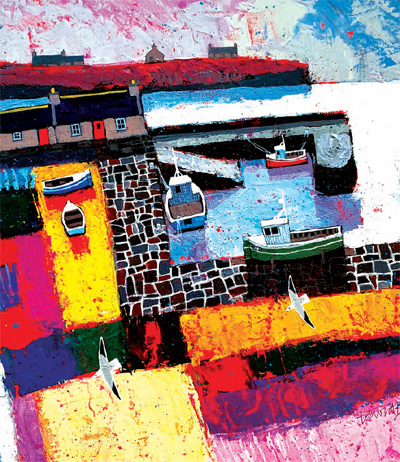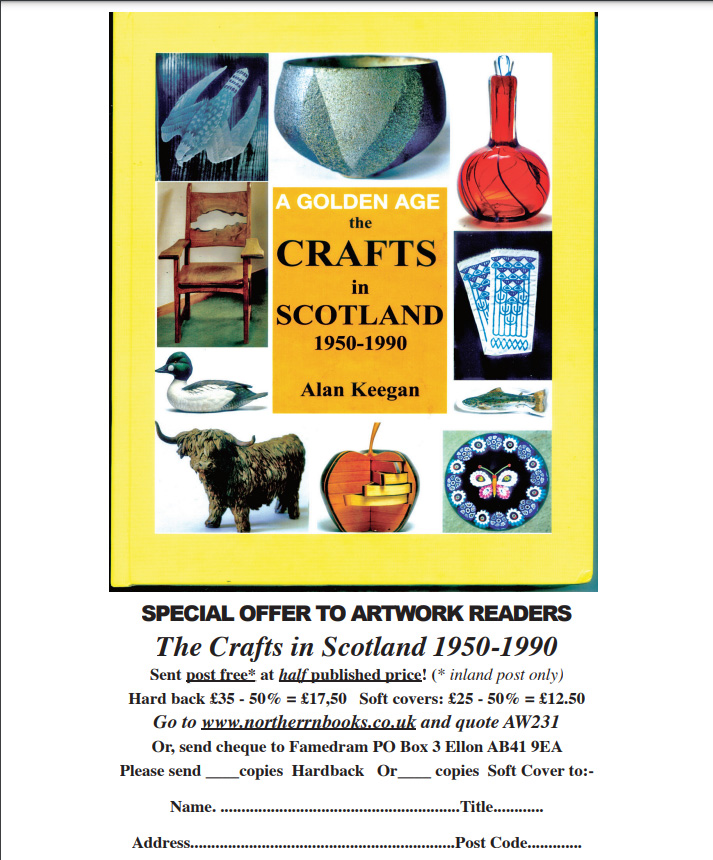
Lost in the woods – a truly iconic building worth saving
Crichton Wood on the battle to restore Bernat Klein's studio
WHAT was all the fuss about? Bit of an ill-informed thought I held when leaving the office of Hugh Martin & Partners, Architects clutching a copy of Peter Willis's New Architecture In Scotland, which was published in 1977.
On the front cover was a photograph of was a studio designed by the architect Peter Womersley, High Sutherland, a building that he had designed for the internationally famous textile designer Bernat Klein, in luscious deciduous woods on the outskirts of Selkirk.
I had been considering studying architecture and was given the book to peruse. The building, when originally designed, had not just won both an RIBA award and the Edinburgh Architectural Centenary Medal, it had been widely featured in international magazines and was recently voted fifth in an architects' list of Scotland's 100 best buildings. The Bernat Klein foundation, the National Trust for Scotland and the Scottish buildings Trust recently bought the building at auction for £ 279,000 in July.
The now A-listed studio had been on Historic Environment Buildings at Risk register since 2002 and was in a sorry state, enclosed in security fencing, razor wire and suffering not just neglect, but the cheery effects of our Scots climate.
Peter Womersley was a charismatic, talented architect who practised mainly in Scotland from the early 1960's. His original break was designing a house in Huddestfield, Farnle Hey, for his brother in Huddersfield in 1954.
By chance Bernat Klein had visited it. Within a week he had commissioned Womersley to design his own house in the Borders. It too has now been A-listed and recently refurbished. The house sits within a modular frame,
that is manipulated for the function of the building, but also to frame views of the spectacular surrounding Scottish Borders countrysid.

The interiors are breathtaking, with minimal lines set within beautiful materials such as travertine
marble and polished walnut, highlighted by Bernat Klein's own fabrics, which he had designed, dyed and woven himself.
The house was in fact used to host client meetings, where Bernat would fly up leading designers from around the world including the elite fashion houses of Dior and Chanel. The house has been recently restored and was in fact featured in Book of the Week on Radio 4.
With an expanding workload, Bernat had the vision to create a specially designed studio for his work alone, so there was no surprise who he would ask to design it. In 1972 Womersley
was commissioned to proceed.
The design was revolutionary for the Borders, at its essence was developing architectural ideas that were being explored by the leading post-war American architects, in particular Mies van der Rohe's Farnsworth house (1945-51) Philip Johnstone's glass house (1948-49) and Yale Professor of Architecture Paul Rudolf's brutalist designs for the University of Massachusetts, Dartmouth (1963-89).
The idea of creating a floating glass box in the countryside came from Mies; adding a brick service core, resembling a minimalist work of art was Johnstone's
and expressing the concrete frame came from Rudolf.
Womersley weaved these ideas together on two floors and created something quite revolutionary for the Borders. There was nothing quite like it in Scotland at the time. The real key to understanding this architecture is to experience it: to be inside looking out, to be outside looking in, throughout the day and night, throughout the seasons. See the light and shade of dappled sunlight move as sun and moonlight flicker through the trees.
It is to be hoped that the coalition of heritage and design groups will succeed in turning the building into a new venue to inspire creative arts in the Borders.
The National Trust for Scotland's Philip Long believes the building is "… important both for its architectural design and the rich heritage it represents as part of Scotland's world renowned creativity in textiles."
Now for the hard work. Scottish Historic Building Trust, who will lead the conservation work, believe it will cost between £ 2.5-3 million to restore.
When this costly work is completed, people will have their own opportunity to judge what all the fuss was about. ArtWork will be watching with interest.






